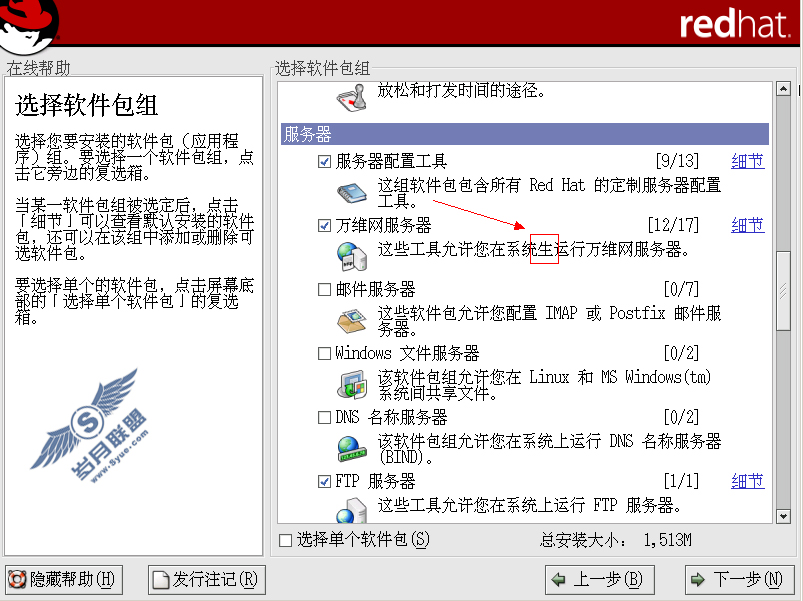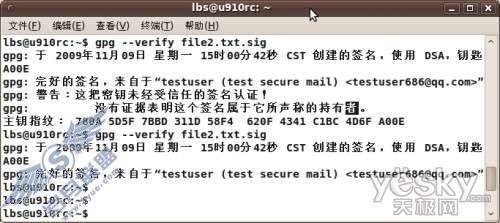linux物理内存探测
来源:岁月联盟
时间:2012-01-04
在header.S中执行下面汇编代码:
start_of_setup:
.....
# Jump to C code (should not return)
calll main
.....
跳到boot目录下的main.c文件中
void main(void)
{
......
/* Detect memory layout */
detect_memory();/*内存探测函数*/
......
}
int detect_memory(void)
{
int err = -1;
if (detect_memory_e820() > 0)
err = 0;
if (!detect_memory_e801())
err = 0;
if (!detect_memory_88())
err = 0;
return err;
}
由上面的代码可知,linux内核会分别尝试调用detect_memory_e820()、detcct_memory_e801()、detect_memory_88()获得系统物理内存布局,这3个函数内部其实都会以内联汇编的形式调用bios中断以取得内存信息,该中断调用形式为int 0x15,同时调用前分别把AX寄存器设置为0xe820h、0xe801h、0x88h,关于0x15号中断有兴趣的可以去查询相关手册。下面分析detect_memory_e820()的代码,其它代码基本一样。
#define SMAP 0x534d4150 /* ASCII "SMAP" */
/*由于历史原因,一些i/o设备也会占据一部分内存
物理地址空间,因此系统可以使用的物理内存空
间是不连续的,系统内存被分成了很多段,每个段
的属性也是不一样的。int 0x15 查询物理内存时每次
返回一个内存段的信息,因此要想返回系统中所有
的物理内存,我们必须以迭代的方式去查询。
detect_memory_e820()函数把int 0x15放到一个do-while循环里,
每次得到的一个内存段放到struct e820entry里,而
struct e820entry的结构正是e820返回结果的结构!而像
其它启动时获得的结果一样,最终都会被放到
boot_params里,e820被放到了boot_params.e820_map。
*/
static int detect_memory_e820(void)
{
int count = 0;/*用于记录已检测到的物理内存数目*/
struct biosregs ireg, oreg;
struct e820entry *desc = boot_params.e820_map;
static struct e820entry buf; /* static so it is zeroed */
initregs(&ireg);/*初始化ireg中的相关寄存器*/
ireg.ax = 0xe820;
ireg.cx = sizeof buf;/*e820entry数据结构大小*/
ireg.edx = SMAP;/*标识*/
ireg.di = (size_t)&buf;/*int15返回值的存放处*/
/*
* Note: at least one BIOS is known which assumes that the
* buffer pointed to by one e820 call is the same one as
* the previous call, and only changes modified fields. Therefore,
* we use a temporary buffer and copy the results entry by entry.
*
* This routine deliberately does not try to account for
* ACPI 3+ extended attributes. This is because there are
* BIOSes in the field which report zero for the valid bit for
* all ranges, and we don't currently make any use of the
* other attribute bits. Revisit this if we see the extended
* attribute bits deployed in a meaningful way in the future.
*/
do {
/*在执行这条内联汇编语句时输入的参数有:
eax寄存器=0xe820?
dx寄存器=’SMAP’
edi寄存器=desc
ebx寄存器=next
ecx寄存器=size
返回给c语言代码的参数有:
id=eax寄存器?
rr=edx寄存器?
ext=ebx寄存器?
size=ecx寄存器
desc指向的内存地址在执行0x15中断调用时被设置
*/
intcall(0x15, &ireg, &oreg);
/*选择下一个*/
ireg.ebx = oreg.ebx; /* for next iteration... */
/* BIOSes which terminate the chain with CF = 1 as opposed
to %ebx = 0 don't always report the SMAP signature on
the final, failing, probe. */
if (oreg.eflags & X86_EFLAGS_CF)
break;
/* Some BIOSes stop returning SMAP in the middle of
the search loop. We don't know exactly how the BIOS
screwed up the map at that point, we might have a
partial map, the full map, or complete garbage, so
just return failure. */
if (oreg.eax != SMAP) {
count = 0;
break;
}
*desc++ = buf;/*将buf赋值给desc*/
count++;/*探测数加一*/
}
while (ireg.ebx && count < ARRAY_SIZE(boot_params.e820_map));
/*将内存块数保持到变量中*/
return boot_params.e820_entries = count;
}
其中存放中断返回值得结构如下
struct e820entry {
__u64 addr; /* start of memory segment */
__u64 size; /* size of memory segment */
__u32 type; /* type of memory segment */
} __attribute__((packed));
在内核初始化跳入start_kernel函数后执行以下初始化
start_kernel()->setup_arch()->setup_memory_map()
/*调用x86_init.resources.memory_setup()实现对e820内存图的优化,
将e820中得值保存在e820_saved中,打印内存图
*/
void __init setup_memory_map(void)
{
char *who;
/*调用x86体系下的memory_setup函数*/
who = x86_init.resources.memory_setup();
/*保存到e820_saved中*/
memcpy(&e820_saved, &e820, sizeof(struct e820map));
printk(KERN_INFO "BIOS-provided physical RAM map:/n");
/*打印输出*/
e820_print_map(who);
}
在x86_init.c中定义了x86下的memory_setup函数
struct x86_init_ops x86_init __initdata = {
.resources = {
……
.memory_setup = default_machine_specific_memory_setup,
},
……
};
char *__init default_machine_specific_memory_setup(void)
{
char *who = "BIOS-e820";
u32 new_nr;
/*
* Try to copy the BIOS-supplied E820-map.
*
* Otherwise fake a memory map; one section from 0k->640k,
* the next section from 1mb->appropriate_mem_k
*/
new_nr = boot_params.e820_entries;
/*将重叠的去除*/
sanitize_e820_map(boot_params.e820_map,
ARRAY_SIZE(boot_params.e820_map),
&new_nr);
/*去掉重叠的部分后得到的内存个数*/
boot_params.e820_entries = new_nr;
/*将其赋值到全局变量e820中,小于0时,为出错处理*/
if (append_e820_map(boot_params.e820_map, boot_params.e820_entries)
< 0) {
……
}
/* In case someone cares... */
return who;
}
append_e820_map调用__append_e820_map实现
static int __init __append_e820_map(struct e820entry *biosmap, int nr_map)
{
while (nr_map) {/*循环nr_map次调用,添加内存块到e820*/
u64 start = biosmap->addr;
u64 size = biosmap->size;
u64 end = start + size;
u32 type = biosmap->type;
/* Overflow in 64 bits? Ignore the memory map. */
if (start > end)
return -1;
/*添加函数*/
e820_add_region(start, size, type);
biosmap++;
nr_map--;
}
return 0;
}
void __init e820_add_region(u64 start, u64 size, int type)
{
__e820_add_region(&e820, start, size, type);
}
e820为e820map结构
struct e820map {
__u32 nr_map;
struct e820entry map[E820_X_MAX];
};
其中E820_X_MAX大小为128.
tatic void __init __e820_add_region(struct e820map *e820x, u64 start, u64 size,
int type)
{
int x = e820x->nr_map;
if (x >= ARRAY_SIZE(e820x->map)) {
printk(KERN_ERR "Ooops! Too many entries in the memory map!/n");
return;
}
到这里,物理内存就已经从BIOS中读出来存放到全局变量e820中,e820是linux内核中用于建立内存管理框架的基础。在后面我们会看到,建立初始化节点、管理区会用到他。

